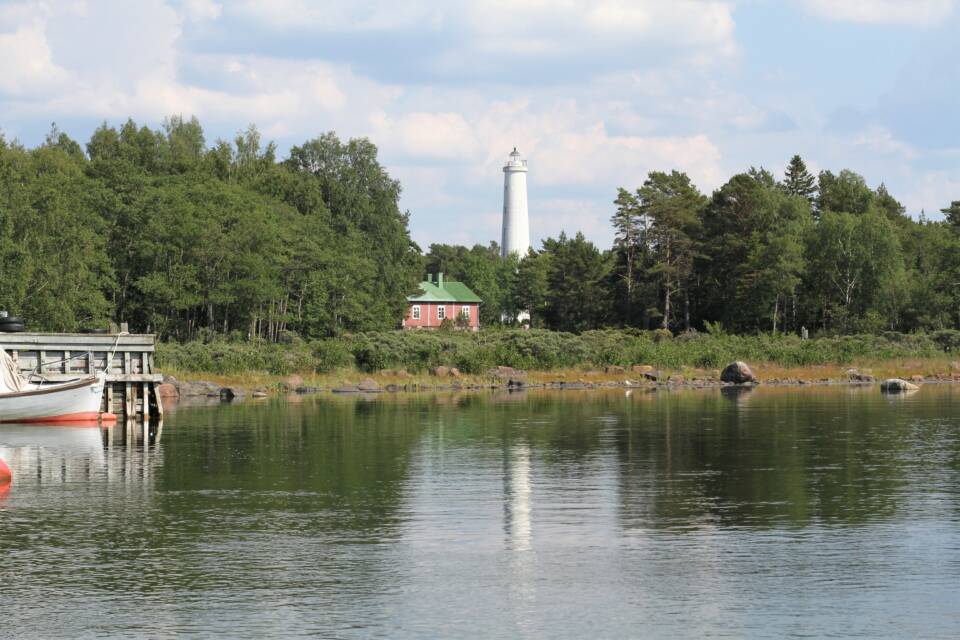
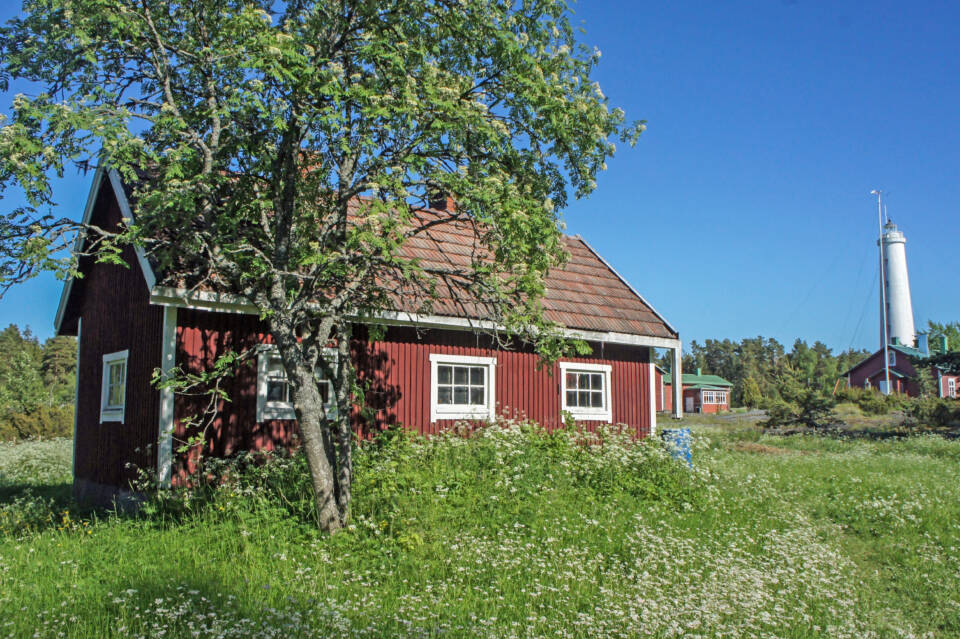
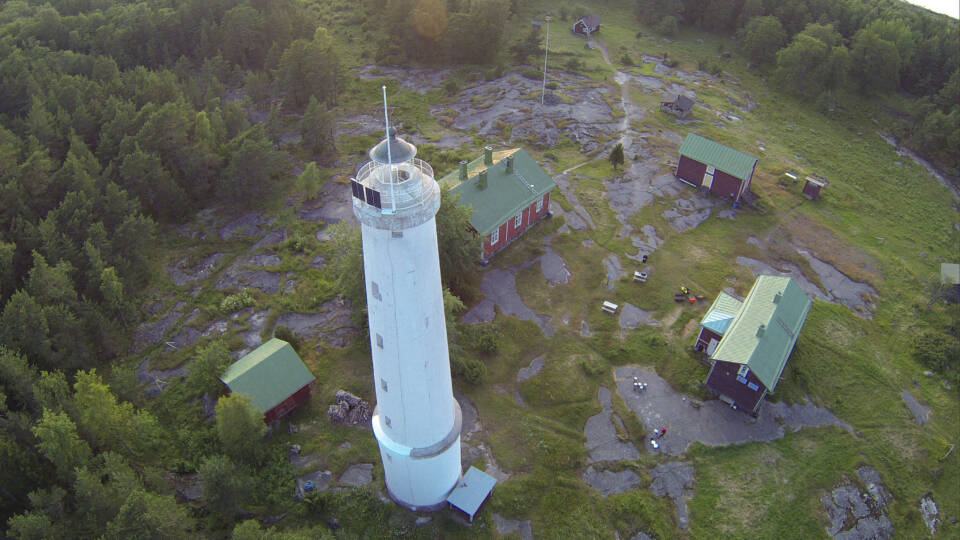

The rounded and forested island of Säppi is located in the open sea, about 14 kilometres southwest of Mäntyluoto Harbour. For centuries, this island has been centrally located along the busy shipping route between Ostrobothnia and Sweden.
The island has had fishing activities, pilotage, as well as wooden nautical navigation signs since the 18th century. During the darkest times, signal fires were also burnt on the island, which guided ships along the right route into Pori Harbour.
The idea of a proper lighthouse only first began by the 1870s, when the Finnish pilotage and shipping lanes were developed. The imposing lighthouse tower was completed in 1873 and its light guided seafarers for well over 20 kilometres out at sea.
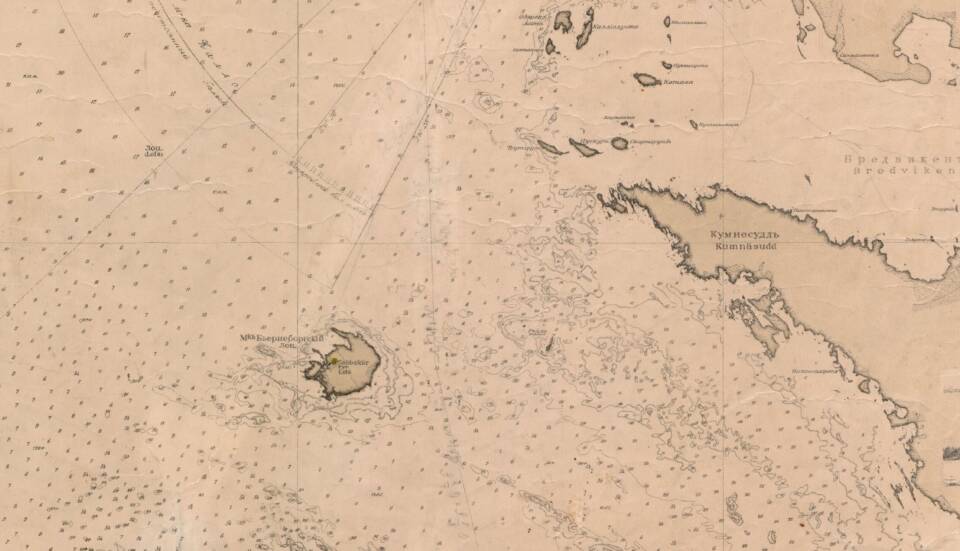
A lighthouse master and several lighthouse keepers were employed at the Säppi Lighthouse. They lived in a sheltered yard surrounding the lighthouse tower. The pilots lived on the western shore of the island. The pilot station was a one-story guardhouse with an observation tower.
The island staff cultivated small patches of arable land, and the rest of their goods were brought several times a week from Reposaari Island, off the coast of Pori. Pets were also kept on the island.
Life on the island began to quieten when the pilot station was decommissioned in 1959. Three years later, the lighthouse was automated and when the lighthouse guards also departed the island, it was left uninhabited.
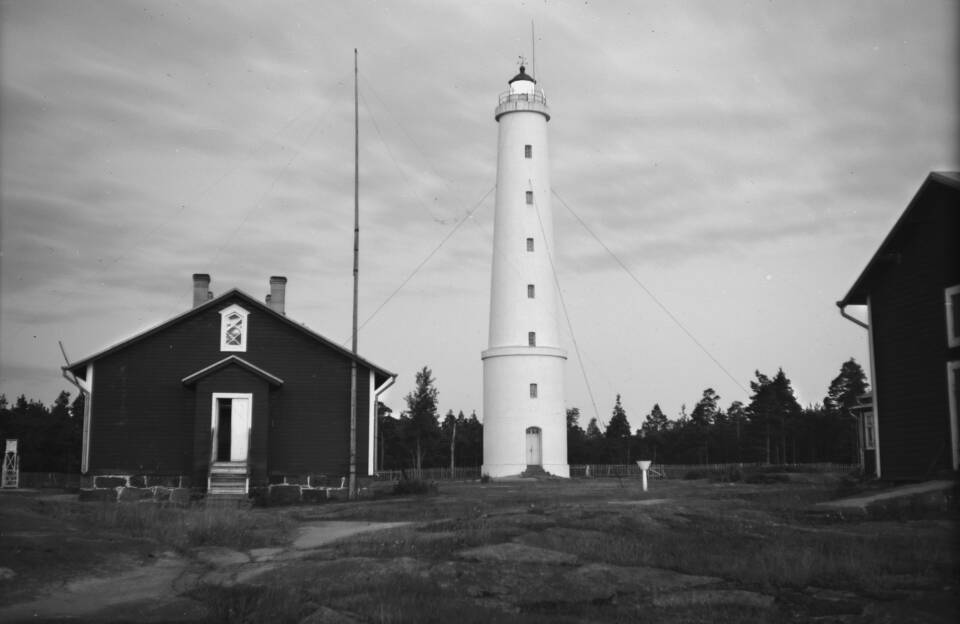
The island of Säppi forms an intact entity from which we can learn about the operations of a 19th-century lighthouse, a pilot station, and their associated buildings.
The whitewashed 28-metre high lighthouse tower dominates the island’s landscape. Most of the lighthouse and dwellings around it are still in their original form. In addition to the residential buildings, the island has many ruins of old buildings, as well as the remains of an old daymark beacon close to the lighthouse.



The lighthouse is kept in operation by the actions of a local society, known as Säppi 2000 ry. The light is powered by wind energy.
Today, Säppi Island is well managed. With its varied scenery and nature trails, it is a fascinating and popular camping destination. There is also a wild flock of sheep on the island. These are known as mouflon sheep and originate from the Mediterranean islands of Corsica and Sardinia.
There are also many wrecks of various ages in the waters around Säppi Island. For example, the modern wreck of the schooner Koivisto has been deliberately sunk as a dive site. Information about other wrecks can be found in the Cultural environment service window(siirryt toiseen palveluun).
Read more about Säppi Lighthouse in the official webpages(siirryt toiseen palveluun)!
In December 1914, three disastrous shipwrecks in a row took place in the immediate vicinity of Säppi Island.
After the outbreak of World War I, the German Navy laid 80 mines near Säppi Island, in the sea area off the Port of Pori. A Swedish vessel named Everilda struck one of these mines and sank immediately.
The ship Luna, who came to help the shipwrecked crew, picked up six surviving men from the water. Soon however, it too hit a mine and sank quickly. Although the ship’s own crew was rescued, five of the six previously rescued men went down with the ship.
As the next morning dawned, a third ship approached the minefield, despite the best attempts of the lighthouse keepers on Säppi Island to alert the ship using warning shots. Their efforts were in vain and the ship struck a mine and was lost with all its crew.
The original story is from a book published in 1999 by Seppo Laurell, entitled “The Lighthouses of Finland” (Fin. Suomen majakat).
The buildings on the island of Säppi form a well-preserved complex of maritime history.
The Finnish Heritage Agency has designated Säppi Island as a nationally significant built cultural environment. The island is also part of the Bothnian Sea National Park, and partly of the Pohjansäppi Nature Reserve, as well as a Natura 2000 nature protection area. All of Säppi’s buildings are protected by the Luvia area shore zoning plan.
A link to the nationally significant cultural environment webpages (siirryt toiseen palveluun)(In Finnish and Swedish).
Cruises and guided tours to the island are organised during the summer and visitors by private boat can also go ashore.
Finnish Heritage Agency’s webpage
P: 6829020, I: 199162(siirryt toiseen palveluun) (ETRS-TM35FIN)